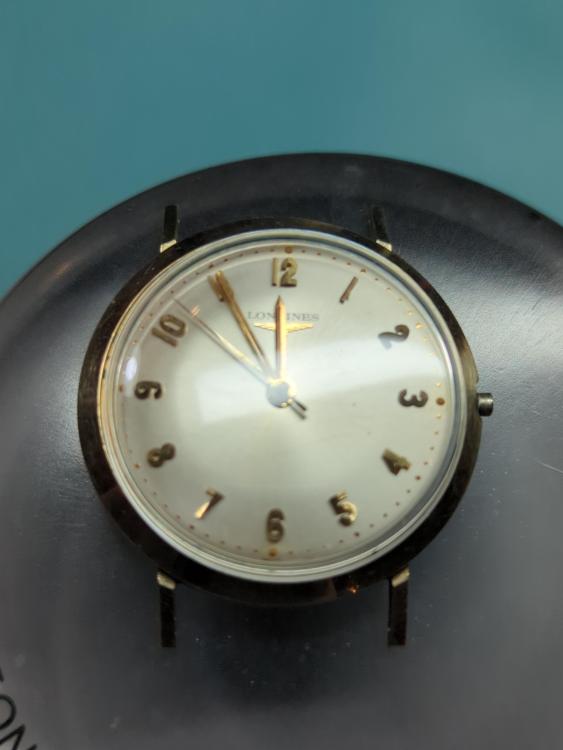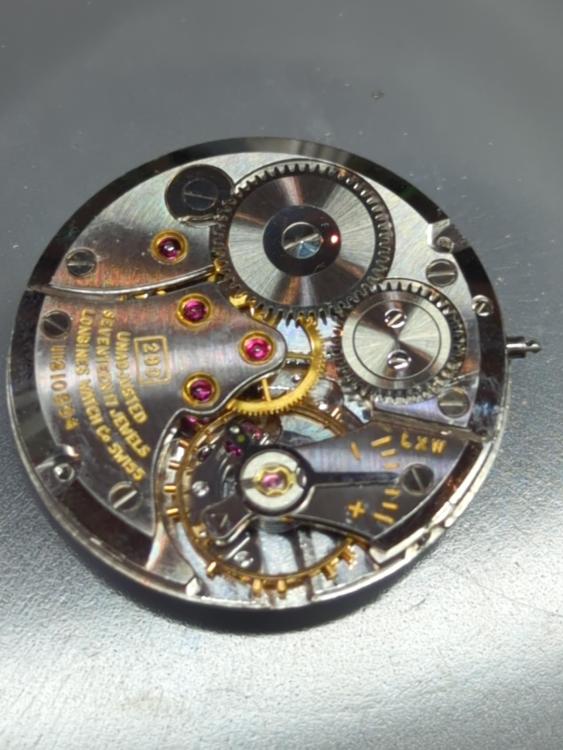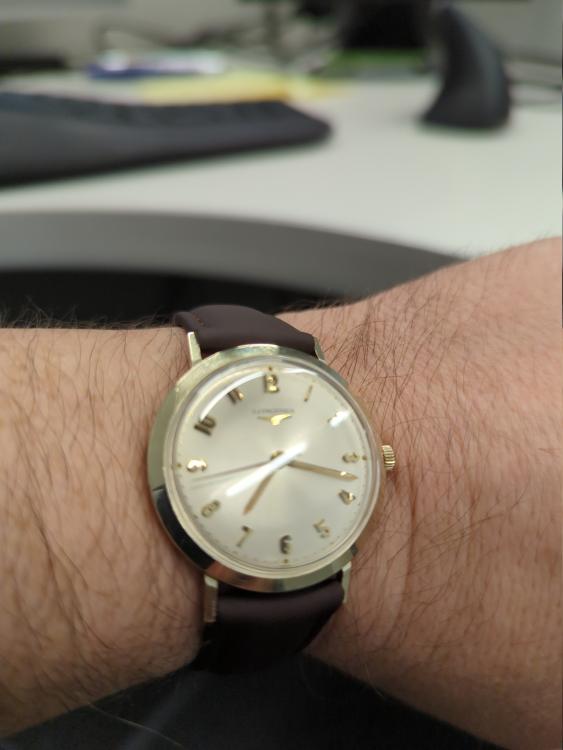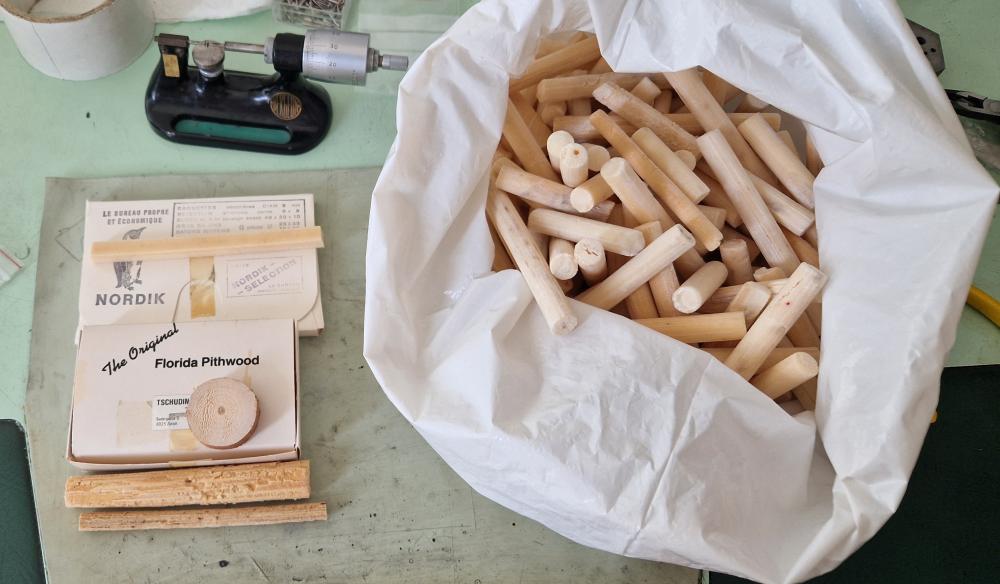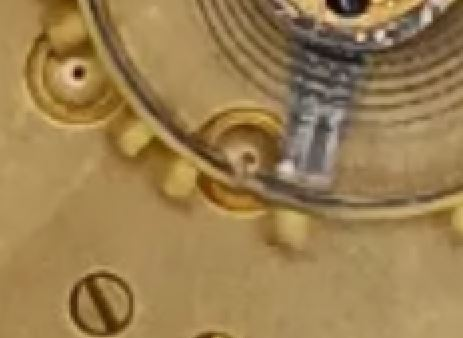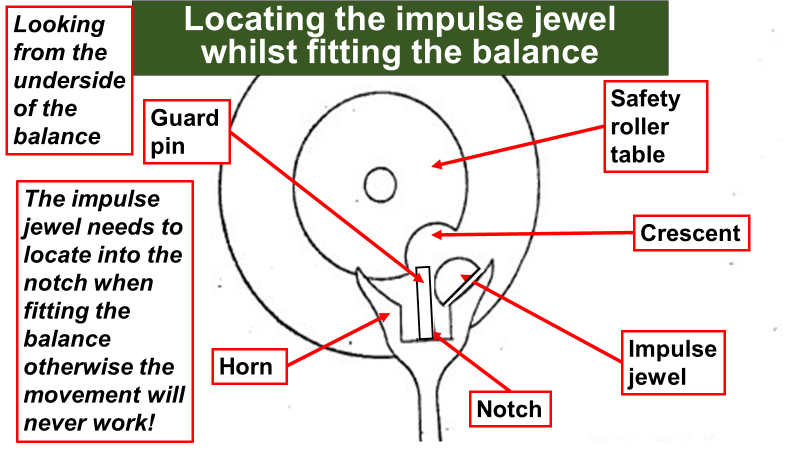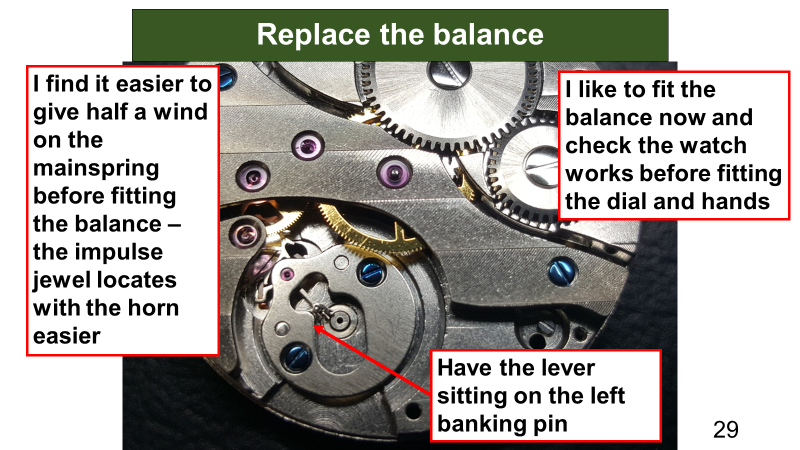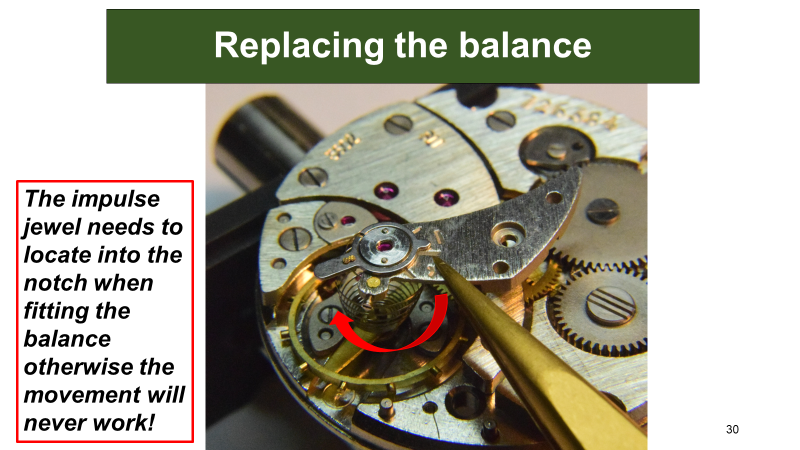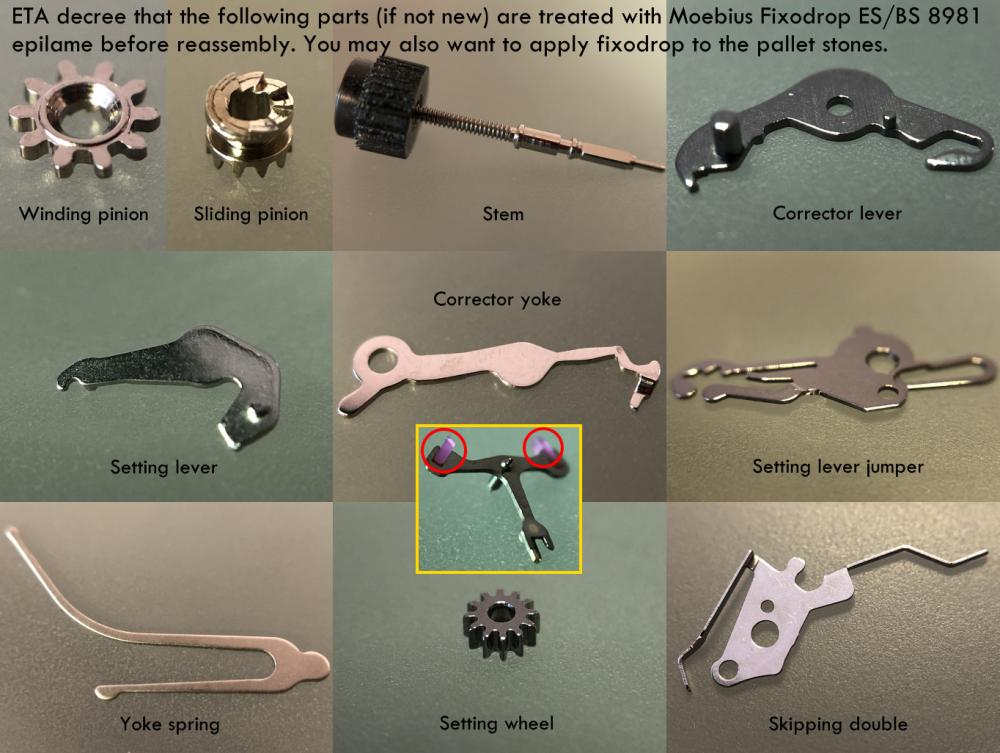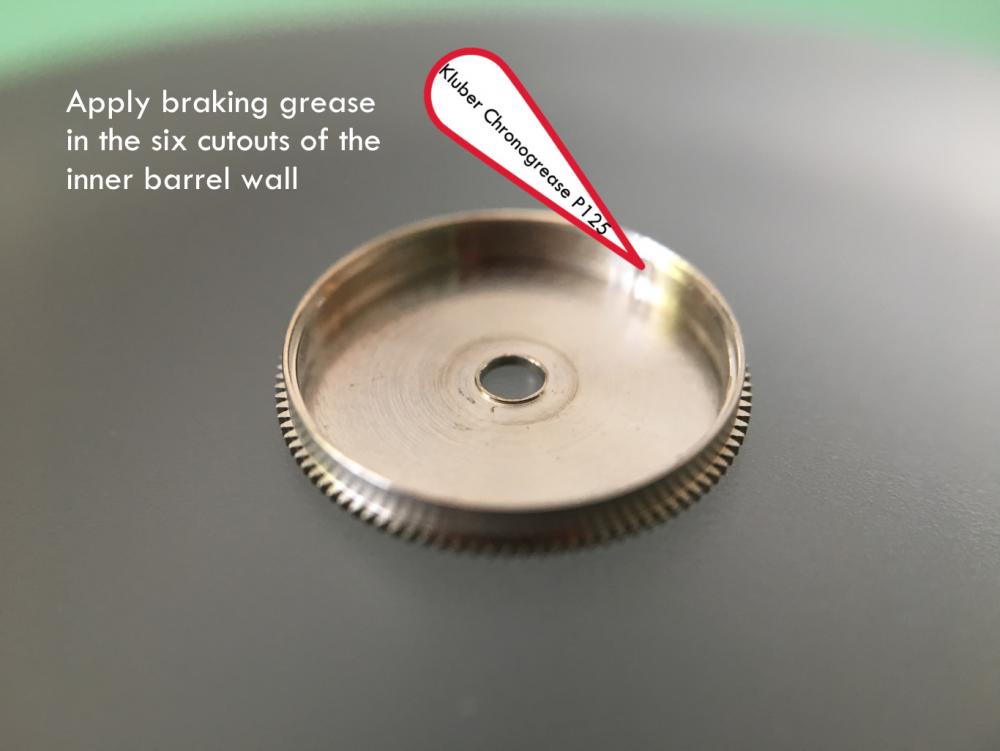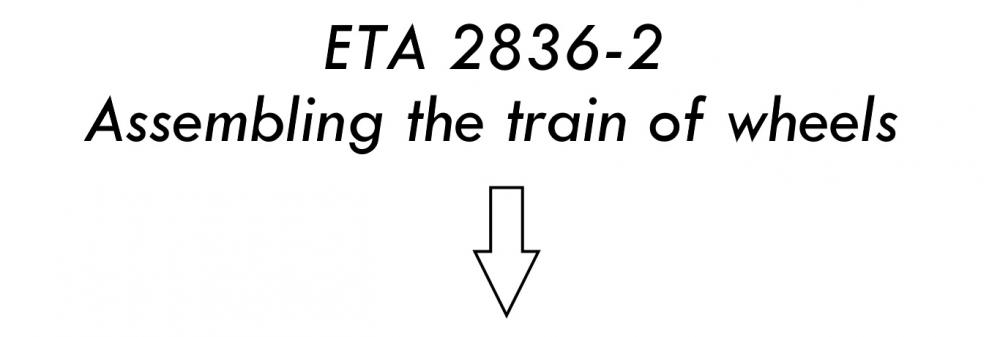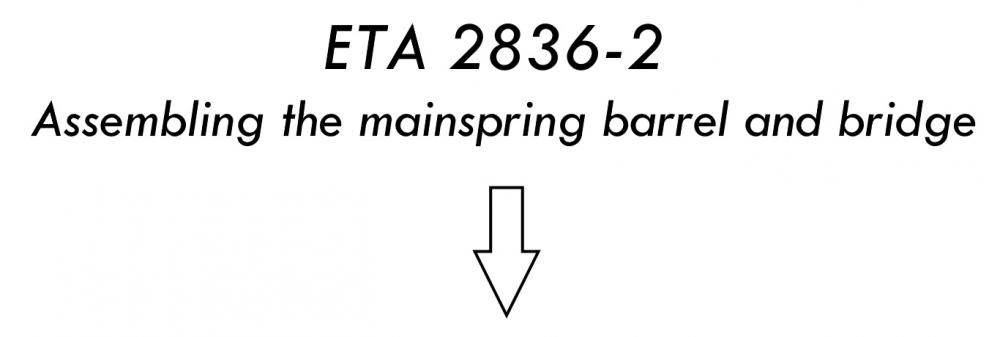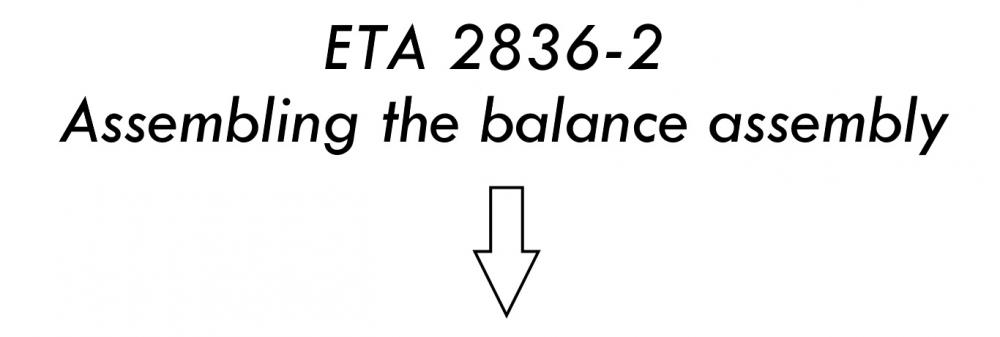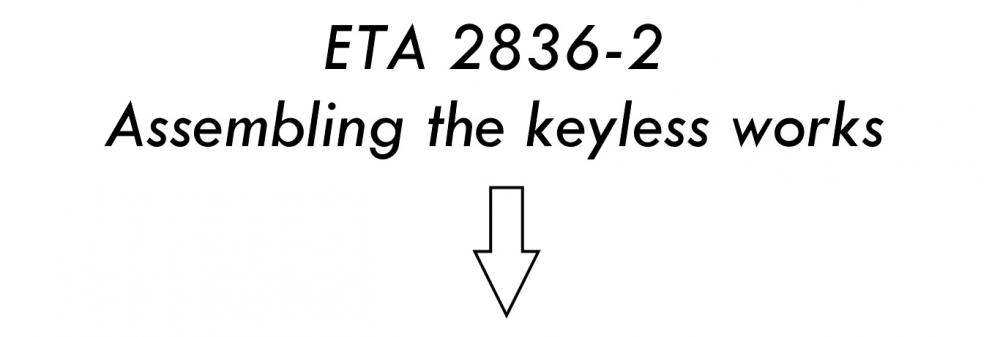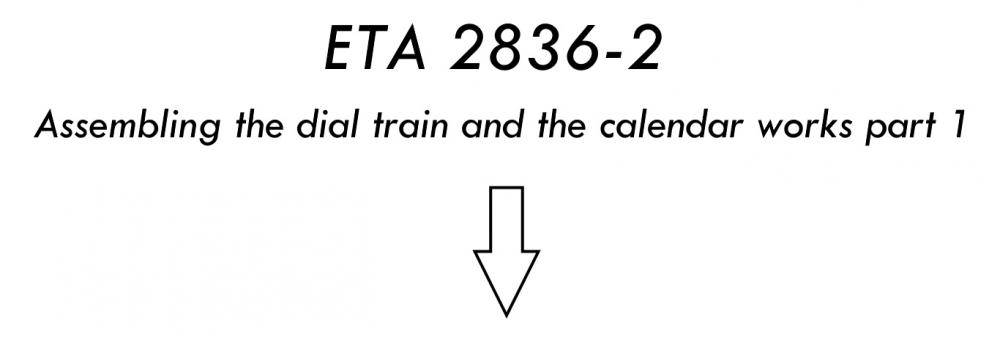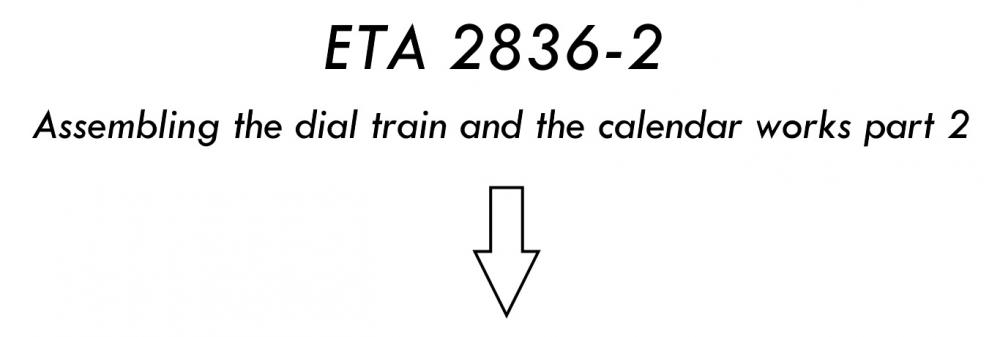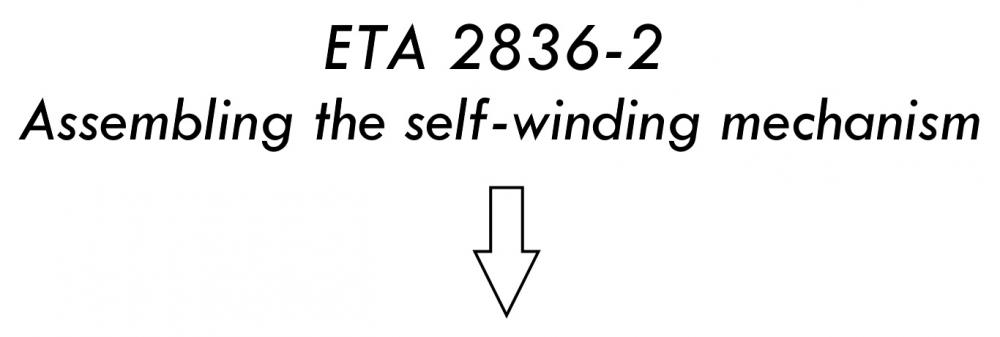Leaderboard
Popular Content
Showing content with the highest reputation on 05/30/23 in all areas
-
This is a Longines Cal 280 which I started a while ago which was a non-runner and turned into a bit of a marathon when I ran into issues with the mainspring, I took the barrel and mainspring apart to clean as normal, but couldn't get it back together, which is when I realised that unlike many watches the sealed unit warning on the barrel rely means sealed unit. After a false start with a bad spare part choice I ended up having to get a whole new movement.... but as it turns out this was a good (lucky) call as I also needed to replace the escape wheel (broken pivot) and to replace the cannon pinion. Dial was in great shape and the hands just needed the lume replacing. Before and after shots below Before Front: Before movement: Finished watch:6 points
-
3 points
-
Because you simply can't live without it. I even sleep with mine. Then of course the brand name, Bergeon, which makes you feel like you own a genuine Rolex. Absolutely!!! Don't waste another second. Order one, or even a few different sizes, NOW!2 points
-
your example reminds me of I once took a class with watchmakers who worked for a specific store. The particular store has locations all up and down the West Coast as far as Hawaii and I don't off they go as far as Texas. In a case that a lot of watchmakers and I took a class on her Omega quartz watch. Which of course is really a eta movement. A couple of the amusements the Omega quartz watch was like having around $2000 the Hamilton version was $500 in this watch was I believe $60 maybe it was 75. So I have one of those lurking around here someplace. Now this watch is not identical cousins and molded plastic but the Hamilton would be identical almost. So of course the question came up is how can you sell and well Omega has a name brand name and Hamilton has its own brand name but their identical inside basically then the other amusement was Jeff the head watchmaker was trying to inquire as to whether the parts in the Swatch group would fit the other watch because he was having a hard time getting them and of course if you so much cheaper.1 point
-
thinking about this if you run into people collecting an American pocket watches for instancethey will tell you I have a Hamilton 992 or I have a Hamilton 992b there very proud of the movement in the watch. Or even some wristwatch collectors Rolex in particular but others there very proud of the particular movement. Especially if you have a window in the back so they can actually see the movement versus they think that's in there but maybe it is or is not. Kinda like the people who buy cloned watches don't actually know what's inside their watch but in a case of the modern typically quartz watch it's a jewelry item that happens to tell time it's a fashion watch. So when their changing batteries on the other desk you look at the movements and shake my head because? Without basically I better not say what I'm thinking in the shop and get in trouble they are pretty darn cheap movements with a lot of plastic components await bad wording engineered material components. Which of course makes it easy to do a movement swap because they have no sentimental attachment to the inside of their watch. this is starting to come up with even some Seiko watches as Seiko's OEM division has an equivalent movement C can just do a movement swap as it's a lot cheaper than doing overhaul. Just try to do that to somebody who knows what's inside their watch like all at swap out that Rolex 3035 as it's vintage and let's put this modern Swiss quartz movement instead no more pesky any problem in their watch will run perfect at least until you need to change the next battery see what happens. Plus conceivably the quartz watch might even keep better time than that vintage Rolex1 point
-
So you’ve flexed the hairspring,it’s easily sorted but I know you’re not confident in stripping the clock so I’d reframe from messing any more until you strip the mechanism now. As for stripping yes you’ll need to remove the dial, the hands should be press fit, once the power is off the mainspring away you go taking it apart, if you want to see a rescued hairspring look on my Instagram under white_time_horology I had a mangled one on there that I rescued.1 point
-
Yup, you are paying for the name and the visual aspects of the watch...not the guts. Great marketing. Great branding.1 point
-
Thanks John; I still do value my life, so I'm hanging on your lips Picture will be soon ......1 point
-
the problem with American pocket watch mainsprings are at one time they came in lots of different thicknesses. Then some watch companies like Elgin even had bonus thicknesses outside of the normal range. But today that problem has typically been solved for you in that you're lucky if you get a mainspring at all typically there's only one mainspring available. There are some American pocket watches where at least on paper it indicates there are other thicknesses in existence currently but obtaining one may be an issue. nothing wrong with doing this as it's a lot easier than trying to do it in the watch. But once it's in the watch without power often times it helps the loosen the screw and reposition things. Sometimes you'll have to adjust the height you're either too low or too high. The studs do not magically always line up being even with the bridge unlike modern watches were typically that is the case. In any case once it's in the watch without power you do want to verify that everything looks right. Because unfortunately hairsprings present the biggest nightmare for us all and the represents the location of the greatest cause of problems for us. Unfortunately I speak from experience. then yes there is this problem a lot of times removing the balance with bridge from the watch it will bend at the stud. in other words in the watch. Usually the best place to solve a watch hairspring problem is with the balance wheel in the watch. If and this can present a challenge with pocket watches if the stud is very loose when it's unscrewed you can turn the watch sideways and you can loosen the stud screw and the stud will typically find its own position as the watches running. Sometimes that works because the other problem that happens when you loosen the stud screw especially if it's heavy it will fall. But a lot of times in pocket watches it just won't move very much at all. But definitely best to do the final tweaking in the watch where you can see what things look like. Often times out of the watch still looked perfectly centered they might even look flat but it's in the watch where the problems occur and that's where the problems need to be fixed.1 point
-
no you do not want to do that then I have to be nice. A case C and questions there and I just walk away because I'm not sure how to answer some of the questions. Or if I do answer questions I'm forced to try to be really really really nice and not say what I'm really thinking it limits the responses you're going to get. yes this is definitely a safe zone issue. This is where I would advise don't do it. In watch repair any time anyone finds out you can repair a watch suddenly watches will start appearing. Seemingly innocent little things like your wife's watch or a Prius family heirloom and as we all know watch repair is easy especially when you're starting out. So then you have to ask is it worth the risk? Will your wife still be talking to you if it doesn't work ever again? Always something to think about. unfortunately quartz watches have the same flaws as a mechanical watch and bonus ones. That is they do need to be serviced. Also like mechanical watches if the gaskets start to go which they will over time conceivably moisture will get in then you can have corrosion issues. The bonus issue are quartz watch is they run on extremely tiny amounts of power and seemingly innocent little things that would never bother mechanical watch will bother quartz watch. Not quite a speck of dust but anything bigger than a microscopic's back in the right place in the watch will stop. based on your voltages it sounds like you're using a DVM? So with a digital volt meter that provides basically no load on a battery will get 1.59 V brand-new. Ill drop a little bit but it will level out one very level for a very long time. Then depending upon the watch bike of it has a secondhand typically when it reaches a certain voltage it will indicate change the battery. All your voltages should have been more than enough to run the watch. yes it can cause a harm currently the perception is changing the battery will fix the problem but it won't now you have a problem we'll have to do something. With enough fresh batteries you might've been good for a while longer not really but quartz watches of course do not function like a mechanical watch. Then they have the added bonus of being like a black box input output and what's going on inside there? Especially when it comes the circuitry so now we require equipment. Like ways of measuring fractional currents and a variable voltage power supplies required. Then technically not a well something with limited power you don't want to accidentally short the wires and vaporize something of the watch using a very high power normal power supply you might use for powering other stuff so yes in the case of a quartz watch anything that interferes with the running of the watch causes the power to increase in the form of how much courage is drawn. If you take a quartz watch for the secondhand your measuring the microamps you stop the secondhand from moving you'll see the current increase. Normally when I'm servicing a quartz watch I like to do a before and after current consumption and verify its within specifications. Then if you get newer watches they can actually adapt the power to the stepping motor. The width of the pulse increases when it senses it needs to. Like on a calendar change so normally rerunning at a certain power when it detects it has to get the calendar change it will increase the pulse width. I find amusing witschi way of a machine at work that I don't always use I prefer the analog current meter because it's easier to see trends then a digital display. But with the expensive digital tester it will tell me exactly how wide the pulses. But what's the point I don't know of any technical sheet that says it shouldn't be this when it's okay and it should be this what's driving the calendar so what's the point of giving me a number that I have no reference for other than if I was a factory which I'm not. On the other hand the fancy machine tells me of the quartz is oscillating which you can't tell normally by just visually looking at the quartz crystal in seeing vibrate for instance so searching online for the number reveals mental confusion on my part that's not actually a movement number it's there something it looks like all of their watches may have the same number. So the next time you changing the battery which will be very very soon please get a photograph of the movement. Then in the field of quartz watch repair you typically have two things running slow stopping or not running. This could either be a battery or a service issue. Quartz watches because they run on tiny quantities of power almost anything will stop them including bad lubrication in other words it needs to be serviced. Any specks of dust when you open the watch up if you not super careful a spec a dust falls in the anything they interferes with the watchmaking appeared to be a watch running slow were it's basically a mechanical issue of something interfering with the watch running. Typically servicing will solve that problem. Fast is always circuit related. Those who is why typically you never see fast and occasionally it occurs but that usually is almost nonexistent. this is a question I ponder for very vintage watches? The early watches had trimmer capacitors relatively simple circuits then they went to the EEPROM programming for a variety of parameters. Which even had a quartz machine that would reprogram the watch for you with several protocols except of course you do not get a tech sheet as to which protocol you need. So I have pondered whether the first generations of those conceivably can lose their programming. But I don't think we've seen it yet. Then along those lines what about all the early computers the people that are collecting computers that the memory is in a dear my memories failing? Not the EEPROM's but the UV erased stuff. Don't they lose their memory of eventually? Now back to the reality of the situation you have two options well technically three. The easiest option would be find somebody else to handle the problem it's not your expertise level and you don't feel good about doing it. Number two service the watch as that's all it probably needs it just needs to be cleaned the gaskets in the case need to be replaced that will probably fix your problem but there is the other option this is why we need a picture of the movement movement which would need any way to get technical specs. Where I work the procedure would be watch comes in it seems to be running we change the battery. Customer comes back watches still having an issue. The money that went into your battery will be applied to the repair. Sometimes they try to jumpstart it they put it on a device that will spin the road are hoping to break free the lubrication and as an added bonus they put a little quartz watch oil on the various pivots they can see in other words a Band-Aid fix and they see if they get the watch jumpstarted again if so it goes back to the customer at no charge. But if that doesn't work then they will typically do a movement swap. They swap movements all day along and that section. It's one of the amusing aspects of watches you paid all that money and inside is a movement that cost like $20 or less. So movement swap is a valid repair the relatively inexpensive just make sure everything is really really clean and replace the gaskets to avoid any future issues then worst-case with anything valuable and vintage it becomes an overhaul. that typically lands on my desk. I remember the last Seiko watch when I lifted off the plate the wheels were stuck to it. Mechanical watch well even ladies watch that would be a tough running situation but on a quartz watch totally unacceptable. Picture the movement would be helpful.1 point
-
It seems to be more often than not with me that non concentric coils of the hairspring are down to stud positioning in the carrier and/or the pinning of the hairspring at the stud. Most often this is where adjustment of the hairspring is needed to correct some previous rough handling while removing the balance.1 point
-
Thanks for the warning, I make sure to run away next time I see a mainspring.1 point
-
1 point
-
A forum is kinda like one-dimensional communication. Hard to detect nuance that would be evident in a face-to-face conversation. Moreover, often good communication requires some history with the person you are communicating with. Since you have not been on this form for very long, you have not gotten to know @JohnR725. If you had, you would take this thread in stride. John is like the grumpy old man rocking on the front porch smoking a pipe and dispensing wisdom with an occasional snark. His answer is sometimes embedded in a story. The snark helps the wisdom to land true. If you are not a "drive by" forum member and, instead, stay awhile, you will warm up to John! His knowledge is deep.1 point
-
I'll take a back seat too - have a cup of tea and put it on my Bergeon coaster (only £159)1 point
-
Going by the photo of the balance and hairspring I can see it is not right as others have said. You say you changed the mainspring with a new one with the equivalent dimensions. Who is to say the old mainspring was correct in the first place. I would change that spring with a slightly weaker one. But you must fix the hairspring so it doesn't touch the other coils because at present as it is it will never keep good time.1 point
-
Servicing costs of watches is a difficult topic, it seems ludicrous that the servicing costs of a watch including shipping and insurance can be a considerable percentage of the cost of said watch. If this is the case then we essentially create a situation where it becomes more cost effective to discard a perfectly good watch before its first service and purchase a new model with a new warranty. It would be sad if we created a world where perfectly good watches became disposable due to these costs. However, the time and skill which is used to service and repair these watches should be fairly compensated. You wouldn't expect a car mechanic to spend a day under your car replacing your gearbox for $50, so it hardly seems fair to expect a watchmaker to spend a day servicing your watch for less than you would pay any other skilled person for their time and skill. So we seem to be in a no-win situation in all but the top tier brand of watches where the servicing costs are only a small percentage of its value, where fair servicing costs are too high for everyday watches . What's the solution.....? Not everyone wants outlay the costs of tools and time it takes to learn to do it themselves, and even if you have a friend who does it as a hobby is it fair to ask them to do it?.. I have been asked by several of my friends to look at their (usually expensive) watches. In this situation the upside for me is that I would be helping a friend, but the potential downside is that I junk an expensive watch, and am I morally indebted to pay to fix my mistake or risk the friendship by giving them back a watch in worse condition than I got it with only a "sorry I tried my best" as compensation? So the risk far outweighs the reward for me and I usually politely turn them down. Again, I don't have a solution, but I can see that both sides of the argument are reasonable......1 point
-
I use it all the time. I like the buttons (now hard to find) for cleaning oilers and pushing pinions into to scrub the leaves. The sticks like the pic are handy for that as well, but the buttons are denser and better for pinions. I use the sticks to wipe off mirror finished parts, cut to a blunt screwdriver shape on the end with a razor, dip in alcohol or benzine and blot on paper, then clean the part. Any remnants blow off easily with a blower. Another similar use would be if some shellac flowed to the top of a pallet fork when adjusting the jewels- plug the fork into a dense button (arbor in button), then as above with alcohol and wipe until the shellac residue is gone. The lower applied shellac remains fine. The sticks vary in size and density. I have some old stuff that's cut square, some that's fluffy and airy, some that's dense.1 point
-
There are lots of tools that we dont really need. Some just work better than others. I have a draw full of tools i dont use anymore because i found upgrades to them.1 point
-
Is that a 218 movement? 218s are a good starting point to learn Accutron repair. They are infinitely simpler than 214s. The uA are an indication of the amount of current drawn. It should be within the current range for the movement. An abnormally high current could indicate a faulty circuit, a dirty gear train or a high amount of pressure of the pawl/index fingers on the index wheel. A high current draw will result in short battery life. The adjustments to the index finger that we are talking about here are incredibly small. My 218 just died on me after two years. I found that it's due to an open cell coil. Looks like it's time to build a jig to do coil rewinding as working coils are getting really hard to find.1 point
-
yes I notice I've been a bad influence on the group. Not just you.1 point
-
other than changing the mainspring anything else that you did to it other than cleaning? Then timing machine what does it look like on the timing machine now? this is a vintage pocket watch that you received not running what makes you think it's supposed to keep time? The problem with vintage anything is that it's gone through a lot of hands some skilled some not along the way things have happened to it. This means the assumption of cleaning and a mainspring and it will work perfectly sometimes occurs with a lot of times does not. common reasons why American pocket watches do not keep time which actually applies to just about everything. The basics is the balance wheel round? What do I mean by that let's look at an image a bimetallic balance wheel is really easy to get bent and casually when you look at the arms they should form a circle in the image above I didn't circle where the problem is but it looks to me like the arms are not in alignment? We need a better picture of the balance wheel preferably out of the watch so we can see all of it common problems would be somebody had a bad hair spring day at may not be the original hairspring. I was looking in the parts list and there were a whole bunch of different hairsprings available for this watch. One of the problems of Waltham in that they had a lot of variations there is several different balance wheels several hairsprings including at least one over coil hairspring lots of variations which means lots of opportunities for people to mix-and-match possibly. Although your close enough in time it's probably the right hairspring. Then people replace the balance staff and the balance wheel gets bad up that way. In other words the arms get squeezed EN or somehow move out like what yours looks like. Then they attempt the poise the balance wheel in this condition that makes things much worse or for whatever reason they just like screwing up the poise the balance wheel. This even shows up at work with Rolex watches modern Rolex watch and people rotated the volt timing weights and the watches out of poise and it's not even keeping time. So they can screw up a modern Rolex watch just think what they can do with a pocket watch also look at all the screws doesn't look like you have any mean time screws. Usually can recognize those because the screw length is longer typically they would stick out but a lot of times people think they need to be screwed down tight also yours doesn't seem to have that but check all the screws and make sure that they are down tight be careful not to over tighten or they break off. Also make sure you have matched pairs if there's one on one side should be an identical one on the other side. Often times the screws would it loosen the cleaning machine or just with time look for things like timing washers in other words somebody staff the watch in the past felt that it was often timekeeping be there start grossly undercutting or sometimes filing the screws or they start throwing timing washers under everything you start seeing is things like that you may have timing issues for that alone. then timing machines are nice for diagnostics what is it look like on the timing machine or can you even time it? Look carefully at the hairspring make sure it's not touching anything it's not supposed to be touching. And yes the early watches did not have terminal curve's that came later. But look carefully make sure they hairspring is bumping into the back side of the regulator pin. It needs seven a very tiny band like a terminal curve just keep it away from the regulator pin sometimes a bump into that or if it's rubbing on the balance arms etc. is the watch magnetized? Oh and when they hairspring is pinned to the stud is there any extra hairspring sticking out here? A lot of times in the vintage watches because they didn't have an exact timing they would leave you room for adjustments. Versus the modern watch was pinned in a very exact location and there's no extra hairspring left to play with1 point
-
BR = beat rate (e.g. 18000) T = swing period (e.g. 0.4 s) T = 2 * 3600 / BR LA = lift angle (@ t1) A = amplitude angle (@ T/2) ——————————— A = LA / sin( 2 * Pi * t1 / T) here sin(x) about equal to x: A = (LA * T) / (2 * Pi * t1) = (LA * 3600) / (Pi * t1 * BR) = (LA * 1146) / (t1 * BR) Frank1 point
-
First of all, just to close the loop, your similar post on the NAWCC message board has already been linked to and commented on here: https://www.watchrepairtalk.com/topic/25387-importance-of-amplitude/page/2/#elControls_220787_menu So the best answer you will get will probably be a duplicate of something JohnR has already posted. The most likely explanation for what you are seeing lies in the limitations of your timing machine wrt weak signals or background noise, or user error. If you can adjust the signal gain on your timing machine (less is sometimes more effective than more) try that. Make sure you are working in an environment with low backgroung noise. Try different orientations of the watch in the microphone clamp. Crown against the metal claw often gives the strongest signal. If none of that works, and you can't adjust the gain, get yourself a Weishi 1900 or even better, an all singing all dancing Witschi like the one Lange are using (and attend the training course if possible!). You obviously have the financial means! Whatever you do, rest assured that there is nothing wrong with your watch.1 point
-
It's easier to turn the movement in the last slide, rather than the balance, to locate the impulse jewel with the horn/notch It also depends which way the impulse jewel enters the notch to replace the balance, dependent on if it is a clockwise or counter-clockwise balance. A clockwise balance sweeps in a clockwise direction to the movement and vice-versa1 point
-
I think @Waggygave you the best suggestion, either get the tools and do it yourself, we will help with advice, or ask for someone here who has the tools and means to accomplish it. It doesn’t need to be 100’s of pounds. Tom1 point
-
Nothing wrong with putting your Seiko alarm aside and get you an easier to work on piece? not expensive not rare, a simple manual wind with no complication will do. You will acquire more skill as you go , put the Seiko on bench when you feel you r ready to attack. Just a thought.1 point
-
If it's a Wyler, there's a chance that it is a front-loader. I've worked on a couple of those. I would remove the bezel and crystal and see if the movement comes out the front. If not, then perhaps the back is difficult. Goodness knows, I thought my Glycine Compressor was practically impossible to open until I learned just the right spot to insert a slender knife blade. I'm not opening that one again for another five years, thank heaven. As to bidding against one of us unawares, that can happen. I'm sure most of us here understand it goes with the territory. Heck, if what you're bidding on is an old American pocket watch, you might be bidding against me, among others. Well, even if it is Swiss or English or German, I might still be among the other bidders. We can wish each other luck and hope for the best.1 point
-
Hi Lexacat some times budget tools are just that as you have found out, best to buy the best you can afford in both screwdrivers and tweezers (dumont) They turn up on the ebay quite often, Bergeon, Horotec but the star brand and F*F are also well worth condsidering. I have found most drivers require a bit of touching up. I have got tools I bought 50 years ago and they are still serviceable. Attached a couple of documnets for you interest. cheers 1612608791_ToolsfortheHobbyist (2) (1).pdf TZIllustratedGlossary.pdf1 point
-
Thank you very much for your kind words @Jon! I actually work as a teacher. However, I teach programming (C#/.NET/SQL) and not about watches. I enjoy doing watches (real things) more than programming (virtual things).1 point
-
1 point
-
In addition to John's suggestion above, it would be interesting to see how it does with just 1/2 turn of wind. Without getting into a course in escapement checking and adjusting, there is an excellent article with some very good basic checks by Joseph Rugole from the Horological Times magazine. Normally you have to be a member to access the old issues but for now they seem to be available online (all of his articles were offered as a book by AWCI as well). His article starts on page 44 https://www.awci.com/wp-content/uploads/ht/1979/1979-09-web.pdf1 point




